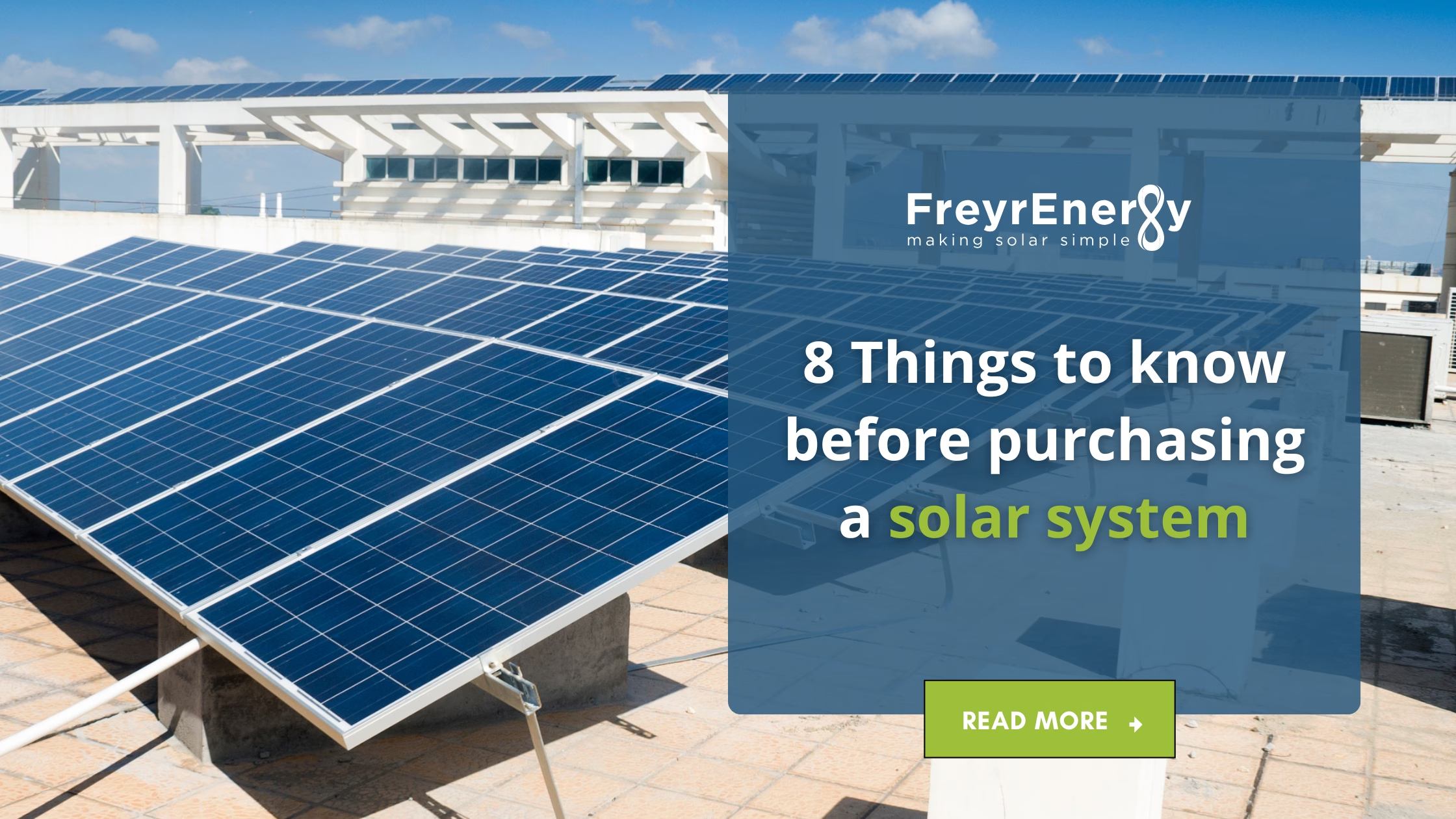A perfect solar system design for solar power installation is a must to ensure outstanding performance for a long time. If you are planning to set up a solar power system for your site, you must consider several aspects beforehand. These are basics to guide you through the entire process. This blog delves deep into 8 points that can have an impact on the proper functioning of your solar system.
Tips to create a perfect solar system design for solar power installation
The following points can help you with the aspects to take care of while installing a home solar system:
1. Feasibility study of the site:
A complete assessment of the site where the solar power system is proposed to be set up is essential. Factors such as the minimum number of hours of direct sunlight, the intensity of sunlight, space availability, distance to transmission lines, slope, etc., need consideration.
Also note that there should not be any obstructions on the roof, like the presence of a chimney, etc. The condition of the roof should also be good so that the solar panels can stay for a long time without any disturbances in the alteration of the roof.
Satellite data and pictures of the site can also provide valuable information. Handheld tools such as solar pathfinder tools can be used to collect data points on every corner and also the middle of the roof.
2. Selecting the type of panel:
Choosing a particular type of panel is based on several factors. Photovoltaic (PV) cell panels are the most commonly used panels. Even in PV panels, there are two types, namely, monocrystalline and polycrystalline. The efficiency of each of these types, solar panel rate, availability, warranty cover, etc., are some points to consider.
The size, weight, and ability for rooftop mounting, etc., also have an impact on solar system design. Selection of the right type of panel is crucial as it decides the life and efficiency of the solar power installation.
3. Number of panels required:
The number of panels required depends on the energy consumption in the site where the solar installation is proposed. When the building is huge, the number of panels required will also be more.
It is essential that the number of panels is calculated correctly so that the solar energy installation is able to support the site’s energy needs. For this, the future needs that may arise due to an increase in the number of equipment, etc., should also be considered.
This is the formula for calculating the number of panels:
Total energy consumption in watts/wattage of one panel = number of panels required
4. Inverter selection
One of the important components of a home solar system is an inverter. It converts the electricity generated by a solar system, namely DC current to AC current, which the grid uses for powering the site.
Selecting the right inverter depends on various factors, such as the size and type of the panel. Solar inverters can be string or micro inverters, as these are the generally available types in the market. The cost of the inverter, efficiency, warranty, and the support available from the supplier are other essential aspects to be considered.
5. Mounting
Every building may not have the same roof type and orientation. But these are the chief factors that have a bearing on mounting a solar system. The structure must be strong enough to hold the solar panels mounted on it.
The mounting rules of the location where the solar power plant is to be set up are also an important point to be considered. The weather conditions will also impact the mounting structure depending on the material used.
6. Electrical layout
It is important to note that the local standards are to be met regarding electrical design layout. All wiring sizes, voltage, earthing, etc., have a crucial role in the electrical design of the solar system installation.
These are to be carefully included in the planning stage to install a system with high efficiency.
7. Commissioning
After ensuring that all electrical components are properly installed as per solar panel design guidelines, defects, if any, are analysed before actually putting the system in place for power generation. All safety aspects are verified before commissioning is completed.
8. Maintenance
Once commissioned, the solar system starts generating power. However, it needs to be constantly checked for efficient maintenance. A maintenance schedule has to be created so that the plant is monitored from time to time. This is essential to identify any defect in the parts so that they can be replaced at the right moment.
Conclusion
A perfect solar design is easy to develop with the assistance of solar experts. Freyr Energy is a leading solar expert in India, striving to make accessible and affordable solar solutions for domestic and industrial use. We are an ISO 9001- and 14001-certified company and have nearly 10 years of experience in the field.
With our main motto of promoting a better environment through solar solutions, Freyr Energy also offers customized solutions to all. We ensure consistent quality in our solar installations and help people achieve energy independence.
Frequently Asked Questions
The quality of the site in terms of sunlight received, slope, shade, etc., impacts the performance of the solar system.
Though battery storage is optional, it is highly useful for storing the excess energy generated, which can be used in times of outages.
Yes, solar energy can bring about a significant drop in utility bills.
Solar panels need very little maintenance. The maintenance schedule is fixed by the solar professionals while installing the system.



